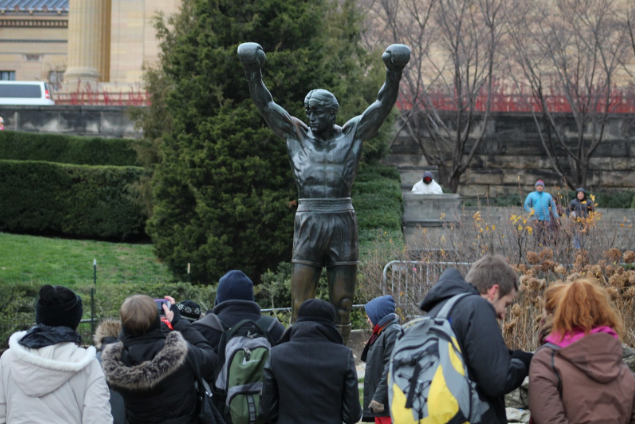
From Pope Francis’ visit in September 2015 to the Democratic National Convention in July 2016, Philadelphia has recently seen an increased number of tourists flock to the City of Brotherly Love.
Each year, the city has seen a recent surge in visitors year over year, according to Visit Philadelphia. In 2015, the city had a total of 41 million visitors, compared to just 39 million in 2014.
The region relies on tourism numbers to help stimulate the local economy. According to Visit Philly’s 2015 Visitation and Economic Impact Report, tourism generates revenue to pay for essential services for regional residents, without raising taxes or increasing the burden on local households.

“I think of tourism like a butterfly effect,” said Kevin Moran, the executive director of the Fairmount Community Development Corporation. “When people visit a new neighborhood or a new city, they’ll certainly share their reactions with friends and family. That, in turn, will influence others to consider visiting or even making a more significant investment – like opening a business or buying a home. So, I think there are immediate effects, mostly economic benefits, and long-term effects, such as improving perceptions and assumptions about a place.”
While there are many reasons why visitors are drawn to Philadelphia such as the longstanding attractions and rich history, events are a big driving force for the city as well. Many of these events, such as the annual Fourth of July Fireworks and Made in America Festival, attract people to the quaint neighborhood of Fairmount.
“Provided Fairmount’s proximity to the (Benjamin Franklin) Parkway (and the institutions along it), Eastern State Penitentiary and even the Philadelphia Zoo, the neighborhood depends on tourism to further stabilize our small businesses,” Moran explained. “While residential density is likely the highest indicator of commercial feasibility, tourism helps to fill the void during slow periods, such as when large portions of the population vacation in the summer. “

Fairmount has been attracting young visitors and residents in the past few years, community leaders said.
“Tourism helps and grows the area,” said Bennett Brookstein, a Fairmount resident and founder of the Fairmount Running Club. “It’s a great community to live in.”
Brookstein believes Fairmount is an attractive destination for visitors because of its proximity to Center City, the numerous bars and restaurants that occupy the area, and sustainability and cleanliness.
“Take Eastern State Penitentiary,” Moran said in relation to the vast changes that have occurred in the area. “Before it reopened as a historical site and museum it was a crumbling eyesore in the neighborhood, depressing real estate values and fostering conditions that contribute to negative safety issues and perceptions. Now re-purposed as a historical site, it provides a unique backdrop to the neighborhood generating pedestrian traffic and animating the sidewalks.”
While tourism does bring many benefits to the area, an increased amount of traffic can have negative effects as well.
“I used to always tell people if there’s an event by the (Philadelphia Museum of Art) to park across the street,” Brookstein shared. “Now, I tell my friends and family if they’re coming for an event from out of town, go find a spot somewhere else. It’s been crazy for parking.”
In addition to the changes in parking, Fairmount has been faced with other infrastructure issues as well.
“An influx of population, including from tourists, create certain strains on public assets: such as parking, road closures, increased litter, etc.,” Moran said. “In some cases tourism can be a strain, limiting parking availability for example.”
“It’s great for people to walk around and a pedestrian area, but if you want to drive it can be difficult,” Brookstein said. “When the pope was in town or for Made in America, I’m down at the beach. It’s just too crazy.”
Additionally, the unpredictability of the neighborhood due to influx of tourism can be frustrating for residents.
“Our neighborhood is always changing,” Brookstein stated. “There could be crime one day and then it’s good for five months. I saw somebody breaking in a car. I saw their body and their feet sticking out, and then I called the police. I was parking my car three blocks away and I witnessed this guy.”
While there are certain limitations such as lack of parking and other adverse effects, residents and tourists seem to overall benefit from tourism’s contributions to the community. As a result, the Fairmount CDC and others have made adjustments to appease tourists.

“Last year we launched a new website and social media handles to better meet tourists where they are,” Moran said. “Research showed that fewer visitors are picking up print materials, so we designed a website that is mobile responsive and not only gives a description of different neighborhood hot spots but can also provide walking, biking, public transit or driving directions. We also are just now finishing up a $1.5 million streetscape enhancement, funded by Commerce Department and managed by Streets Department, to enhance the West Girard Avenue corridor with new lighting, sidewalks, landscaping, bike racks and more.”
The changes are being seen throughout the community.
“The houses are getting renovated, it looks nicer,” Brookstein said. “People are picking up trash and are more aware of it. And you still see some people who don’t care, but more and more you’re seeing nicer blocks. People take care of their houses, keep lights on at night, and keep it pedestrian friendly. That’s the best part – once you are home or in this area, you don’t have to go far at all.”
—Text, images, and video by Samara Grossel and Kristi Fidler


Be the first to comment